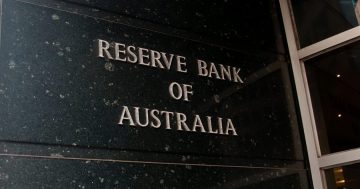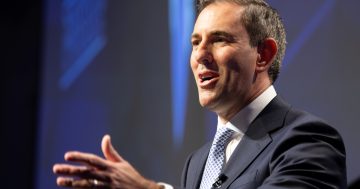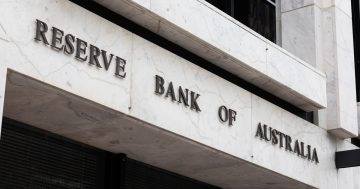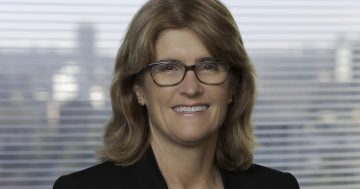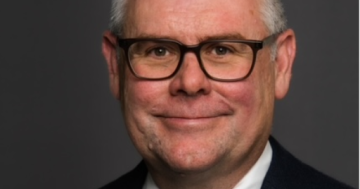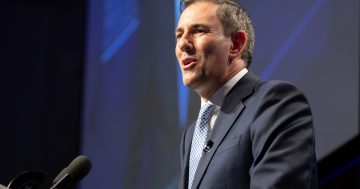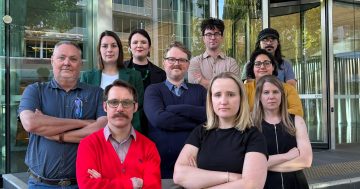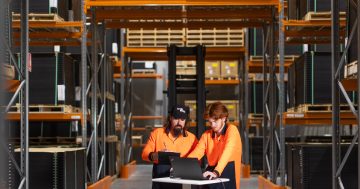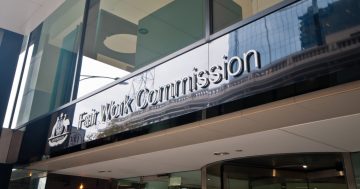Michael Janda* says the Reserve Bank of Australia board is actively considering a ‘pause’ following 10 consecutive rate hikes which have taken interest rates to an 11-year high.
 The Reserve Bank governor has indicated that the board is considering a pause after 10 consecutive interest rate rises, but the timing would depend on incoming economic data.
The Reserve Bank governor has indicated that the board is considering a pause after 10 consecutive interest rate rises, but the timing would depend on incoming economic data.
In a speech to the AFR Business Summit, RBA boss Philip Lowe revealed the bank’s board had actively talked about the possibility of leaving the cash rate target on hold at a future meeting, now that it is in “restrictive territory” at 3.6 per cent.
“At our board meeting yesterday, we discussed the lags in monetary policy, the effects of the large cumulative increase in interest rates since May and the difficulties that higher interest rates are causing for many households,” Mr Lowe told the audience in his prepared remarks.
“We also discussed that, with monetary policy now in restrictive territory, we are closer to the point where it will be appropriate to pause interest rate increases to allow more time to assess the state of the economy.
“At what point it will be appropriate to pause will be determined by the data and our assessment of the outlook.”
When asked in the question-and-answer session what kind of data the Reserve Bank would be looking at to stop hiking rates, Mr Lowe said: “We’ve got a completely open mind about what happens in the next board meeting.”
“Before our next board meeting we’ll have important data on unemployment, we’ll have another monthly inflation indicator, we’ll have more detail on retail spending and the business survey,” he explained.
“So they’re four really important pieces of data that we’ll look at, at our next board meeting.
“If, collectively, they suggest that the right thing is a pause, then we’ll do that, but if they suggest that we need to keep going then we’ll do that.”
RBA at odds with ‘hawkish’ Fed
Mr Lowe’s comments are a stark contrast to the US Federal Reserve, whose chair Jerome Powell last night flagged the possibility of more aggressive rate rises.
The divergence between the two central banks had already seen the Australian dollar lose a couple of per cent against the US dollar since yesterday’s RBA meeting.
Mr Powell has talked up the prospect of bigger rate rises, with markets now pricing in an 80 per cent chance of a half-a-percentage point rise in March.
Instead, Mr Lowe has backed away from firmly locking the bank into further rate increases, noting that “data on balance were a bit softer than we had expected” over the past month.
Recent GDP, employment and wages data has disappointed, with per capita consumer spending already falling in response to the rate rises implemented last year.
“Given these uncertainties, the board is monitoring the data very carefully month to month.
“It has the flexibility to respond as needed,” he said.
“Our judgement, though, remains that further tightening of monetary policy is likely to be required to bring inflation back to target within a reasonable timeframe.”
Mr Lowe highlighted the effect that the rate rises already implemented would have on the economy, noting that it was the only tool the bank had to lower demand and cool inflation.
“I acknowledge that the effects of higher interest rates are felt unevenly across the community.
“The most direct effect for households is on the cash flows of people with variable-rate mortgages,” he said.
“Based on the interest rate increases that have already occurred (including yesterday’s), total required mortgage payments are expected to reach 9.5 per cent of household disposal income later this year, which will be around a record high.”
Mr Lowe said there were signs that the rate increases implemented so far were working, with the recent ABS National Accounts showing a fall in per capita demand.
“The bounce-back in spending following the pandemic has now largely run its course,” he said.
“More fundamentally, the combination of cost-of-living pressures, higher interest rates and the decline in housing values is weighing on consumption.”
Unemployment will rise to contain inflation
However, the Reserve Bank boss also restated the RBA’s commitment to do whatever is necessary to get inflation back to its 2-3 per cent target in a reasonable time frame, even if that meant increasing unemployment, arguing the alternative was far worse.
That “reasonable time frame” appears to be about two years.
“We want to see inflation back to 3 per cent by [20]25,” said Mr Lowe in the Q&A.
“Extending beyond is getting too long, but to get it back more quickly we give up jobs, and I don’t think it’s worth it.”
“If inflation becomes ingrained in expectations, it requires higher interest rates and a large increase in unemployment to get it back down again,” he noted.
“To illustrate the point, in both the United States and Australia, when high inflation became entrenched in the 1970s and the 1980s, the unemployment rate ultimately ended up rising by at least 5 percentage points to get inflation back down.”
Mr Lowe is hopeful that the rise in unemployment needed to get the current inflation episode back under control will be much smaller.
“If we can successfully navigate that narrow path, inflation will return to target in a reasonable time and we will be able to preserve some of the gains in the labour market,” he said, noting that Australia’s unemployment rate had been consistently below 4 per cent for the first time in nearly 50 years.
“That is our ambition.
“It is still possible to achieve this, but we do need to be prepared for other outcomes as well, including a sharper rise in unemployment.”
Mr Lowe added in the Q&A: “I think we can sustain our unemployment rate below 5 [per cent].
“How far below five remains to be determined.”
Prior to the COVID pandemic, the seasonally adjusted unemployment rate had been stuck at 5 per cent or above since mid-2011.
So far, weaker-than-forecast wages data has indicated that inflation was not becoming entrenched through rising pay packets.
“The risk of a prices-wages spiral remains low,” he said.
“If prices and wages were to chase one another, the end result would be persistently high inflation, even higher interest rates and higher unemployment.”
*Michael Janda is the ABC’s Online Business Reporter.
This article first appeared at abc.net.au.


